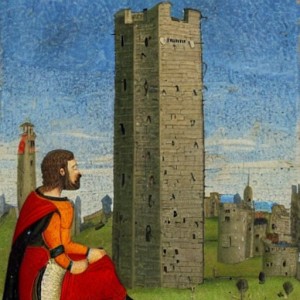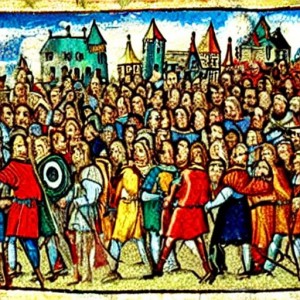The famous play by Pedro Calderon de la Barca was first presented to the public in 1635. Created in the heyday of Spanish literature, it became one of the iconic works of its era. In it the playwright most fully revealed the true essence of human existence and nature. And he helped him in this, he developed a genre of religious and philosophical drama.
“Life is a Dream” is a play of three “hornadas” (action). The word “Hornada” has Spanish roots and means “a person’s life journey, taken in a day.” The artistic time of the drama consists of just three days: on the first (Segismundo – a prisoner in prison) – the heroes are placed in conflict positions, in the second (Segismundo – the prince in the palace) – the tension reaches its climax, on the third (Segismundo – concluded and future king) – there is a denouement.
Three hornadas become in the play and the three stages of the growing human soul. On the first day, we see Segismundo – a man who differs little from a beast: he spent his whole life among wild rocks and he is familiar only with this natural existence, devoid of human feelings and morality.
Torn out from his familiar environment, the hero reveals himself as a real beast – a cruel, bloodthirsty, avenging his past humiliations to everyone, including his own father. The power of the second day opens in Segismundo the worst qualities – selfishness, incontinence, lust.
Waking up in prison, the former prince comes to the conclusion that “life is a dream,” and does not betray him even after he learns from Rosaura the details of his very real reign. In the mouth of Segismundo Calderon puts the basic Christian position of all times and peoples: “We are sleeping before awakening.” The king sleeps, enjoying his rule, the rich man sleeps, comforting his body with material goods, the poor man sleeping, crying bitterly at fate, but sooner or later death awakens from life. Realizing this, Segismundo decides to do good, as the only thing that leaves its mark, both in a dream and in human existence.
Along with philosophical questions about the meaning of life, the play “Life is a Dream” raises the problem of fate and its overcoming by the power of free will. King Basilio, frightened by the terrible dreams of his pregnant wife and the predictions of astrologers, decides to put his newborn son in prison. So ordinary human fear becomes the cause of the formation of bestial cruelty in Segismundo. The hero succeeds in coping with his animal propensities only after becoming acquainted with life – its joys and sorrows, its wealth and vain. Thus, the author approves the idea of humanity, living in each of us and being itself against all odds. The main thing is that the person himself is aware of himself as a person, capable of both bad and good deeds.
In this sense, disgraced by the Duke of Muscovy Rosaura, with all his love and nobility, is obsessed with a desire to avenge the defaulted honor and either regain his beloved or kill him. The girl is so immersed in their misfortunes that she does not notice anything around. She doesn’t care that Astolfo saved the life of her patron and, as it turned out later, her father, Clotaldo. She doesn’t care that the other, no less her duke-loving girl, Infante Estrella, will suffer. Rosaura goes to her goal through, not noticing that she herself will not cope with the problem. Her image is devoid of development, and her life is completely subordinated to the cycle of the plot, a kind of inexorable rock. To save a girl from obsession with revenge is possible only to those who are not afraid to admit their mistakes, and together with them correct the mistakes of other people. The good genius of Rosaura is Segismundo, who at the end of the play turned into a noble and just man and king.

